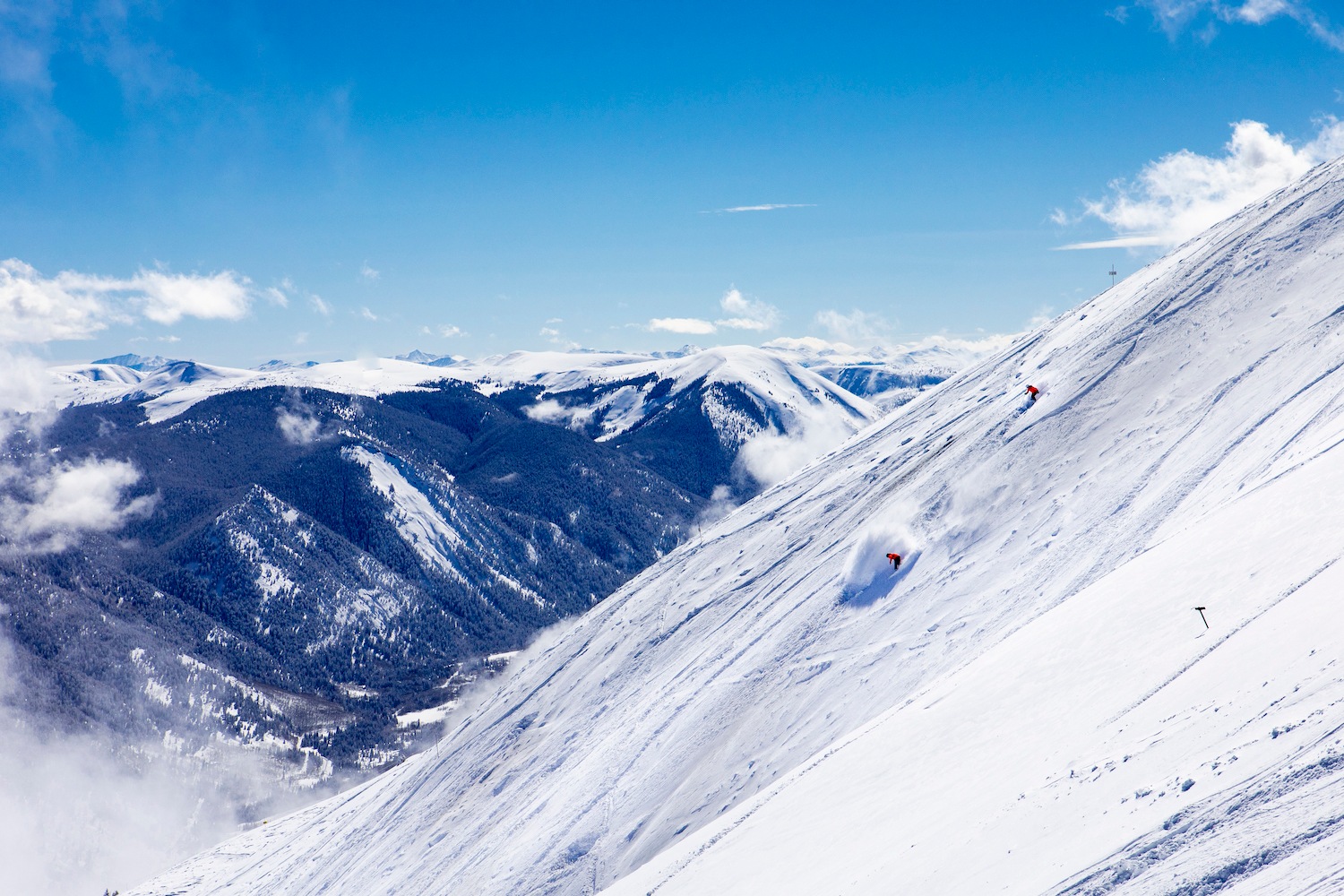In 2011, Cody Musselman graduated from Kalamazoo College in Kalamazoo, Michigan, and moved to Aspen, Colorado, for a winter of skiing. She took a job as a guest services rep, a gig that entailed everything from helping out with ski valet, to conducting on-mountain surveys, to handing out hot cider. The best part of the job was that it gave Musselman the chance to ski a lot.
During her first month in Aspen, Musselman was out skiing when she found herself in a wooded section of the mountain among a trove of music memorabilia—old album covers, photos and the like. Musselman had unknowingly stumbled across one of Aspen’s shrines, hidden monuments that dot the mountain’s forested areas, set up as memorials to lost loved ones, as tributes to famous musicians or as homages to professional sports teams.
Mountain shrines aren’t unique to Aspen—there’s Big Sky, Montana’s hidden liquor boxes (little lockers full of booze spread out over the mountain), the Mardi Gras trees decorated with underwear, beads and shoes at California’s Mammoth Mountain and laminated photos of deceased skiers nailed to trees at ski areas across the country, from Stowe, Vermont, to Alta, Utah. But, with some 150 recorded memorials dotting Aspen’s four mountains—Aspen Mountain, Snowmass, Buttermilk and Highlands—Aspen has become well known for its hidden shrines.

The memorials at Aspen are hidden in the trees and dedicated to musicians, athletes and other pop culture figures. (Photo Courtesy of David Wood)
A few weeks after Musselman discovered the homage, the Aspen shrines came up in conversation. “That’s when I put two and two together,” she said. “And I started to become more interested.” For Christmas, she received the book Sanctuaries in the Snow, written by local author David Wood. In it, Wood documents all of the area’s mountain memorials. Musselman became even more curious and began ruminating over this question: What do they all mean?
Musselman left Aspen after that winter and, in 2015, ended up at Yale University, where she pursued a Ph.D. in religious studies. In the spring of 2015, she took a class about religion and material culture. “At that point, the shrines had been in the back of my mind for a long time,” she said. “I’d been thinking about how quirky they were, thinking about their significance, thinking about how people who lived there related to them, thinking about how people who traveled there were fascinated by them.”
Musselman, now 31, decided to write a paper about the shrines for the class, and went about interviewing locals and reading newspaper reports about the shrines. In her report, which was published last year in the Journal of Material Religion and titled “The Right to Shrine: Global Celebrity, Colonial Logics and Local Knowledge in Aspen’s Mountainside Memories,” Musselman reached some surprising conclusions. She found that the shrines are much more than “quaint reminders of the human factor in recreational tourism.” That, in fact, they’re are a form of colonialism—a marking of territory by locals and regular visitors who feel a sense of ownership over the mountain.
“The Aspen shrines, in their ability to mediate identity, are used by Aspenites to create in-groups and ‘others,’” she wrote. “In particular, the shrines play a role in creating, asserting and sustaining a ‘local’ presence.”
Musselman expands on this later in her paper, writing that, “the invocation of shrines can serve as shorthand to distinguish insiders from outsiders, regular skiers from one-time visitors. The shrines are therefore the material markers of a fictive kin formed around geographies of privilege and access.” In other words, the shrines are physical examples of locals proclaiming the land as their own.

You’ll find shrines to golf, bowling and Marilyn Monroe. (Photo Courtesy of David Wood)
If that seems like a harsh assessment, Musselman agrees. “I suppose you could say so,” she said. “I sit in a seat of privilege, so privilege and access are things I think about a lot. I had to ask, who gets to make a claim? Who has that privilege?”
What particularly troubled Musselman in the course of her research is that shrines lay claim to a space that originally belonged to the Núu-agha-tʉvʉ-pʉ̱ (Ute tribe), a group of people driven from Aspen in the 1800s when mining claims were made in the area. The tribe’s population is estimated to have once been as big as 5,000 or 10,000 people and is now several thousands of members deep and located mainly on multiple reservations in northeast Utah.
As for Aspenites, they seem to think Musselman is right. A story in the Aspen Times asked if it was time to get rid of the shrines. David Wood told the newspaper that Musselman’s article is “brilliant and profound,” further noting that “it goes far beyond what the average person thinks of the Aspen shrines, and makes statements and asks questions about the shrines in such a way that most people would never think of.”
For her part, Musselman doesn’t necessarily want to see the shrines torn down, but she does hope the paper she wrote will provoke thought on the matter. “My intention wasn’t necessarily to fully criticize the shrines or the people who make them,” she said. “It was really to challenge us all to think about the broader politics of the objects that form our everyday life. I’m not out to get the locals, just to push us all to think more deeply about what it is we’re doing.”
